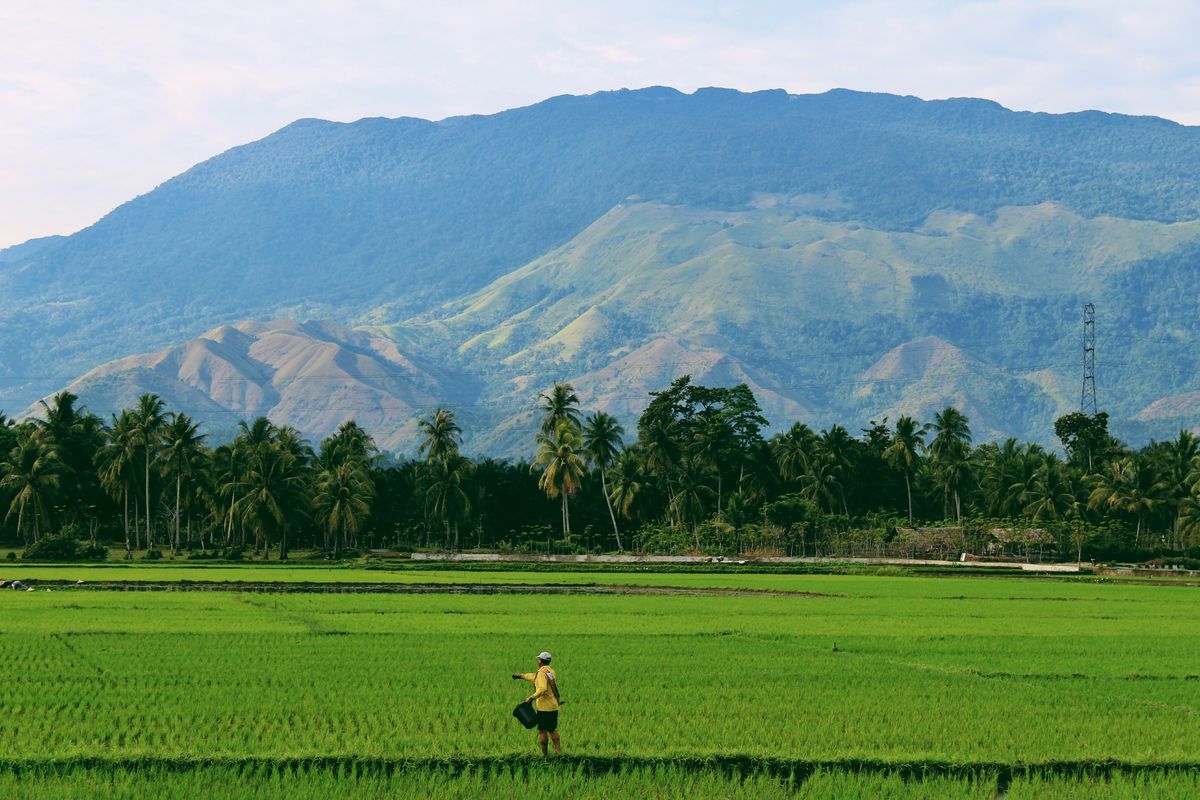Agronomy and Climate Change: Adapting Crop Production to Environmental Challenges
Climate change poses a significant threat to food security and agricultural sustainability worldwide. As extreme weather events become more frequent, it is essential to develop climate-resilient crops and implement sustainable agricultural practices to mitigate the impact of environmental challenges. This article explores the intersection of agronomy and climate change, focusing on adapting crop production to address these pressing issues.
Table of Contents
Key Takeaways
- Crop resistance mechanisms play a crucial role in alleviating climate change-related stress on agriculture.
- Development of climate-smart agriculture initiatives is essential for sustainable food production.
- Enhanced resistance to unfavorable environmental conditions is necessary for crop resilience in the face of climate change.
- The introduction of a sustainable ‘new Green Revolution’ is a key challenge for modern agriculture to ensure food security and environmental sustainability.
- Agronomic solutions offer opportunities to sustain productivity under variable conditions and reduce land-based emissions, benefiting millions of people.
Climate-Resilient Crops and Sustainable Agriculture

Crop resistance mechanisms to alleviate climate change-related stress
In the face of climatic change, developing crop resistance mechanisms is crucial for sustaining agricultural productivity. Enhanced plant resilience is a key focus in plant breeding, aiming to fortify crops against a spectrum of stress factors. These factors include abiotic stresses like extreme weather events, as well as biotic stresses such as pests and diseases.
The development of climate-resilient crops is not just a scientific challenge but a necessity for future food security. These crops are designed to maintain or increase yields under adverse conditions, thereby supporting sustainable agriculture.
The following table summarizes the types of stress factors and the corresponding resistance traits that are being targeted in climate-resilient crop development:
| Stress Factor | Resistance Trait |
|---|---|
| Global warming | Heat tolerance |
| Extreme weather | Drought resistance |
| Soil deterioration | Enhanced nutrient uptake |
By integrating these resistance traits, we can create a robust agricultural system capable of withstanding the environmental shifts brought on by human activities and global warming.
Development of climate-smart agriculture initiatives
The urgency to combat food insecurity has led to the development of climate-smart agriculture (CSA) initiatives, which aim to transform agricultural systems to be more resilient and sustainable. The United Nations has been pivotal in promoting CSA, ensuring food stability and security by increasing productivity, building resilience, and reducing greenhouse gas emissions.
To illustrate the scope of such initiatives, consider the World Bank’s project with six components designed to build resilient agricultural production capacity. This project is a testament to the global commitment to strengthen the productivity and resilience of domestic food systems.
The breeding of climate-resilient crops is a cornerstone of CSA, enabling the cultivation of crops that maintain stable yields despite changing environmental conditions.
The following list highlights key components of CSA:
- Enhancement of crop resistance to stress from extreme weather
- Implementation of sustainable farming practices
- Breeding of crops with improved resilience
- Integration of renewable energy sources into farming operations
- Promotion of carbon sequestration through soil management
Enhanced resistance to unfavorable environmental conditions
The quest for climate-resilient crops is a cornerstone in the battle against the repercussions of climate change on agriculture. These crops are specifically bred to withstand a spectrum of abiotic and biotic stresses, ensuring that yields remain stable even as environmental conditions fluctuate. Modern agriculture must embrace a diversity of species and cultivars to combat the homogeneity that currently prevails.
Breeding programs are pivotal in this endeavor, integrating cutting-edge molecular technologies and field phenotyping techniques. Collaboration across scientific disciplines is essential to foster the development of crops with enhanced resistance to unfavorable environmental conditions. This multidisciplinary approach is not just an economic imperative but a matter of national and global security.
The non-genetic approach to enhancing crop yields in stressful environments involves the use of exogenous phyto- and biostimulants.
The table below summarizes the key aspects of developing climate-resilient crops:
| Aspect | Description |
|---|---|
| Breeding | Incorporation of new molecular technologies and extensive field phenotyping. |
| Diversity | Expansion of cultivated plant species and cultivars. |
| Collaboration | Synergy between breeders and scientists from various fields. |
| Security | Contribution to national and global food security. |
Challenges in Modern Agriculture

Impact of climate change on food production
The ramifications of climate change on food production are profound and multifaceted. Extreme weather events, such as droughts, floods, heatwaves, and cold snaps, directly threaten crop yields. These events, coupled with the increased atmospheric concentration of carbon dioxide, create a volatile environment for food production.
Climate change has already led to a decrease in food production compared to what it would have been without these environmental shifts. The Intergovernmental Panel on Climate Change warns of potential huge supply shocks if global heating continues unabated, with many countries facing declines in food production.
The synergy of climate change, hunger, and conflict is particularly alarming. Food security is a cornerstone of national security, and without it, stability is at risk.
The United Nations’ climate-smart agriculture initiative aims to mitigate these challenges by developing climate-resilient crops. These cultivars are designed to withstand the new environmental conditions, ensuring stable yields and preventing productivity losses. The table below highlights the impact of climate change on crop production:
| Climate Factor | Effect on Crop Production |
|---|---|
| Increased CO2 | Potential yield enhancement |
| Extreme weather | Yield reduction and crop failure |
| Temperature rise | Altered crop distribution |
Adapting to these changes is not just about survival; it’s about rethinking agriculture to secure food for future generations.
Global population growth and soil quality deterioration
The interplay between global population growth and soil quality deterioration presents a formidable challenge to modern agriculture. As the population burgeons, the demand for food escalates, exerting pressure on the already degraded soils. The degradation of soil not only affects crop yields but also the intricate balance of the soil microbiome, which is crucial for plant health and ecosystem sustainability.
The grand challenge of future agriculture is to introduce a sustainable “new Green Revolution”. This revolution must not only increase food production but also preserve and enhance soil health.
To address these issues, a multifaceted approach is necessary, including:
- Improving crop or agronomic practices to boost resource use efficiencies.
- Enhancing soil properties through organic amendments and conservation techniques.
- Developing cultivars with high yield potential that are also resilient to soil stress.
In Southeast Asia, increased population density has led to soil erosion and decreased soil protection, exacerbating the challenges. The global efforts to counteract these trends are critical, especially considering the prediction that the world population will reach 9.7 billion by 2050.
Introduction of a sustainable ‘new Green Revolution’
The Green Revolution of the past century marked a significant leap in food grain production, particularly wheat and rice, which was instrumental in enhancing food security in developing nations. However, the environmental repercussions of such intensive agricultural practices have become increasingly evident. The quest for a sustainable ‘new Green Revolution’ is not just about increasing production, but also about addressing the environmental impacts of agriculture.
The original Green Revolution relied heavily on the use of mineral fertilizers, pesticides, and the expansion of irrigation systems. These methods, while effective in boosting yields, led to environmental chemization, water pollution, and biodiversity loss. A sustainable ‘new Green Revolution’ aims to rectify these issues by promoting practices that are environmentally sound and economically viable.
The challenge is to balance the need for high productivity with the preservation of soil health and ecosystem services.
To achieve this, a multifaceted approach is necessary, including the development of climate-resilient crops, the adoption of precision agriculture, and the integration of organic farming principles. These efforts are expected to benefit millions, with climate-adapted innovations playing a pivotal role in securing food for the future while mitigating the adverse effects on our planet.
Agronomic Solutions for Climate Change Adaptation

Sustainable productivity under variable conditions
Achieving sustainable productivity in the face of variable environmental conditions is a cornerstone of modern agronomy. Many existing agronomic solutions can sustain productivity under such variability, intensifying production to generate more food per hectare and unit of input.
This approach not only boosts yield but also helps to mitigate the conversion of forests and peatlands into agricultural land, addressing some of the most pressing land-based emissions.
Perennial grain cropping systems are emerging as a promising avenue for sustainable agriculture. These systems offer multiple benefits, including tolerance to unfavorable environmental conditions, efficient nutrient and water use, and enhanced soil conservation. The transition to perennials often starts with the hybridization of annual crops with their wild relatives, paving the way for more resilient agricultural practices.
The climate-adapted innovations within these agronomic solutions are set to have a significant impact, with projections indicating benefits for millions of people worldwide.
The challenge of adapting crops to climate change is not only an economic concern but also a matter of national and global security. The development of crops that yield stably under new environmental conditions is crucial to prevent productivity declines and crop failures.
With technological advancements, the support for plant breeding has grown, enabling the creation of crops that are better suited to the changing climate.
Reducing land-based emissions through agronomy
Agronomy has a pivotal role in mitigating land-based emissions, primarily by enhancing the efficiency of resource use in agricultural practices. The Initiative supports improved management practices to restore soil health and associated ecosystem services over 4.6 million hectares of land.
By intensifying production to generate more food per hectare and unit of input, agronomy can reduce the need to convert forests and peatlands into agricultural land, addressing some of the most significant land-based emissions.
Perennial crops are also part of the solution, acting as durable carbon sinks and contributing to the reduction of greenhouse gases (GHGs). Institutions recognize that while they cannot ask smallholder farmers to limit fertilizer application, they can promote Nutrient-Use Efficiency (NUE) in high-output areas to balance the GHG emissions from increased fertilizer use in low-input areas. This approach can potentially increase global food production by 30% without raising the current level of fertilizer consumption.
The following resource provides methodologies for quantifying GHG emission reductions for the Agriculture/Natural and Working Lands.
CIMMYT’s research highlights the importance of targeting nitrogen supplies from both inorganic and organic sources to farms with minimal access to nitrogen inputs. This strategy improves nitrogen-use efficiency and maintains crop yields, which is crucial during fertilizer shortages. It also plays a significant role in lessening climate shocks for smallholder farmers, who disproportionately suffer from the impacts of climate change.
Climate-adapted innovations benefiting millions
The advent of climate-adapted innovations has ushered in a new era of agricultural resilience, with the potential to benefit millions globally. Innovative funding tools for climate adaptation and resilience are playing a pivotal role in this transformation, supporting projects that address disaster risk and implement catalytic and outcome-based instruments.
Perennial crops, for instance, are being recognized as durable carbon sinks and are central to these innovations. They not only contribute to sustained productivity under variable conditions but also help in mitigating land-based emissions. The impact of such crops is substantial, with projections indicating benefits for 55.6 million people across diverse regions.
Improved, climate-resilient crop varieties are a key adaptation strategy, enhancing farmer productivity and profits. This is especially crucial for improving rural livelihoods in vulnerable areas of Africa, Asia, and Latin America.
The table below summarizes the projected impact of climate-adapted agricultural innovations:
| Region | Households Benefited | People Benefited |
|---|---|---|
| Global | 9.3 million | 55.6 million |


